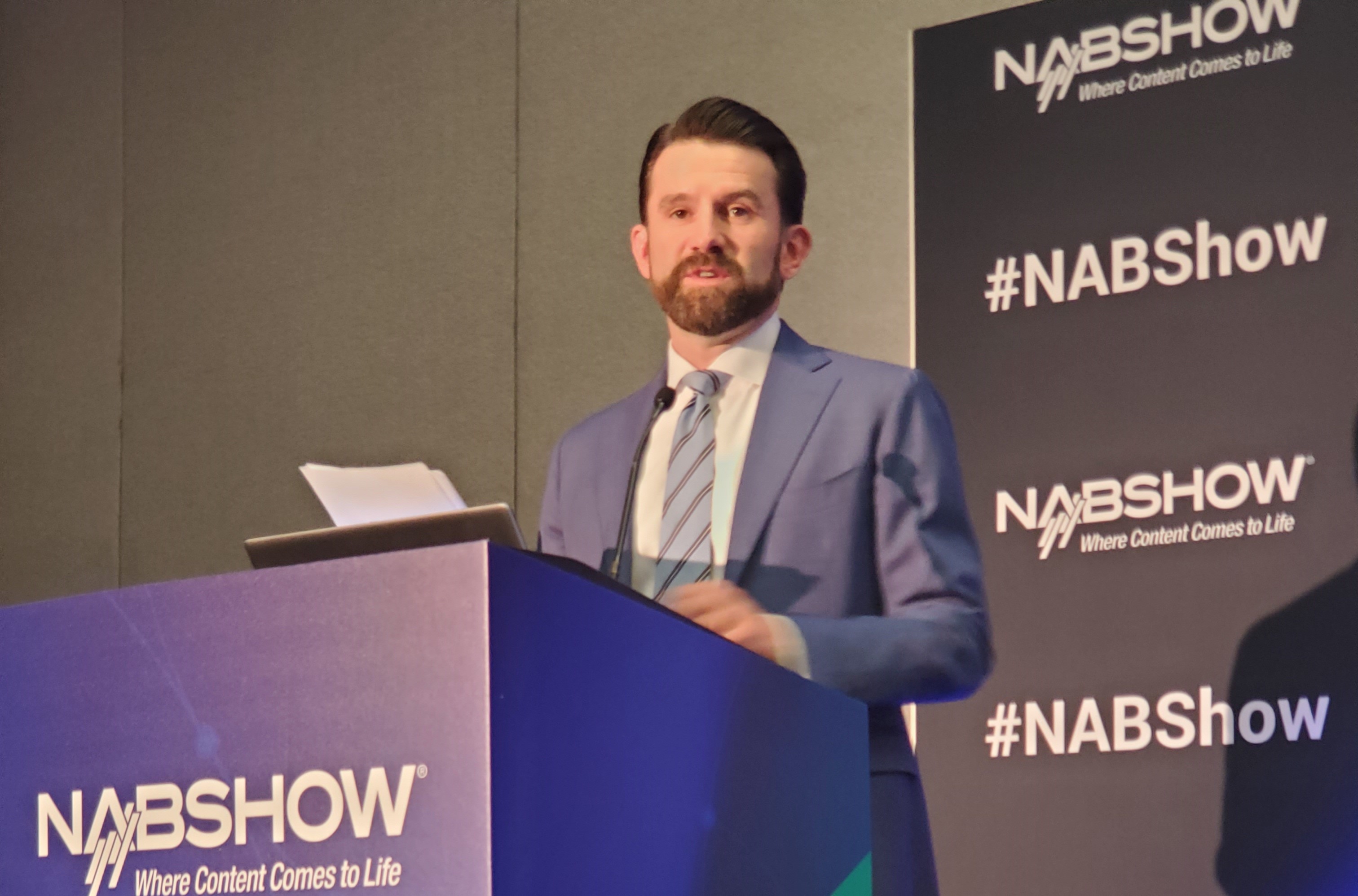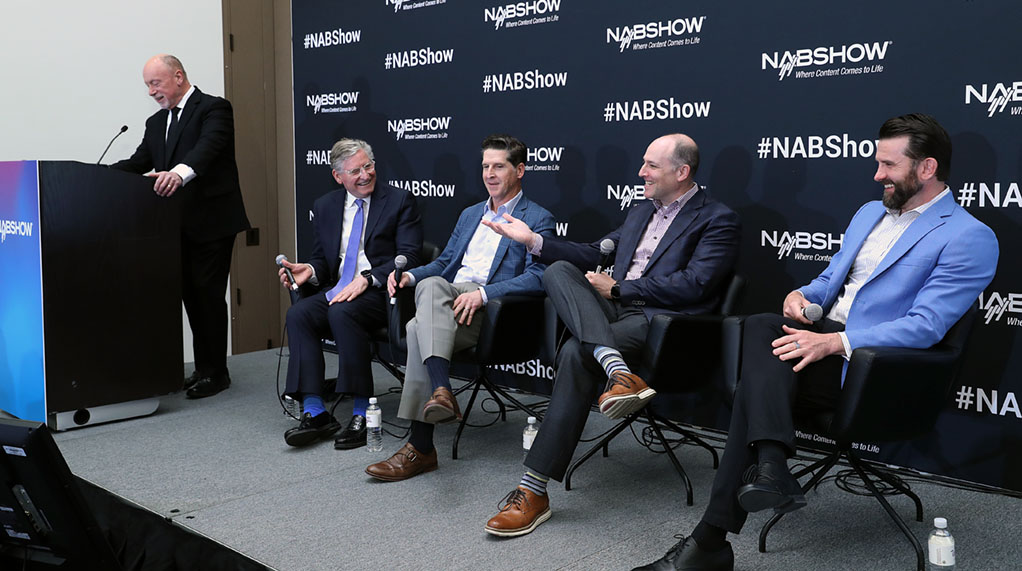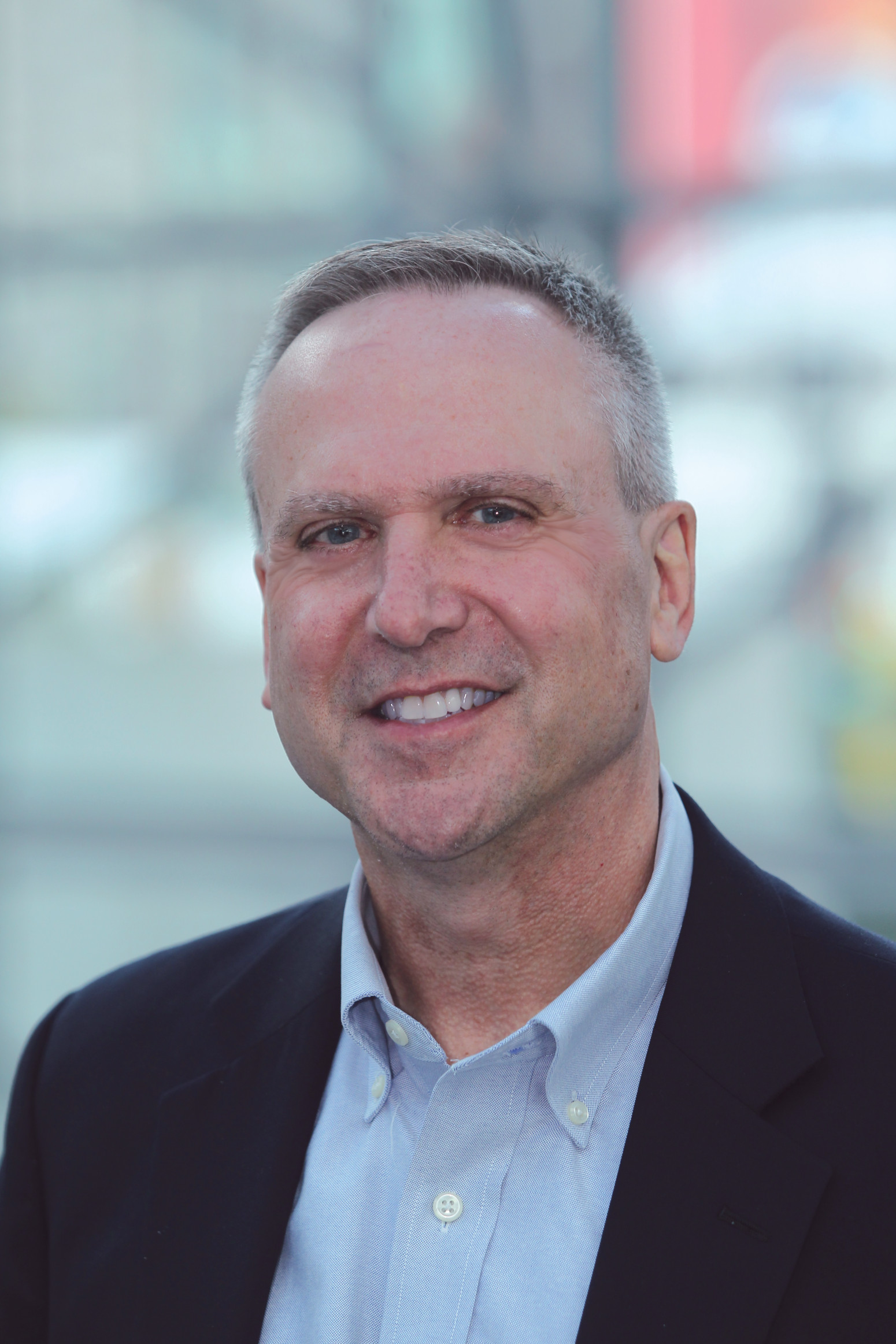Sinclair CEO Chris Ripley: EdgeBeam Could Be ‘A Very Significant Expansion of Revenue Opportunities for the Industry’
Station group chief discusses the evolution and future of datacasting over ATSC 3.0

At the 2025 NAB Show in April, four of the most prominent TV station groups announced the launch of EdgeBeam, a new datacasting service targeting the enterprise market. The four groups—Sinclair, Nexstar Media Group, Gray Media and E.W. Scripps—plan to use the ATSC 3.0 standard as a more efficient “one-to-many” data offload service that could be used, for instance, by the automotive industry for software updates.
In the following interview, TV Tech Editor in Chief Tom Butts talks with Sinclair Broadcast Group CEO Chris Ripley about the joint venture.
TV Tech: What specific market demands led the four broadcast groups to form EdgeBeam Wireless as a joint venture rather than pursuing separate initiatives?
Chris Ripley: There’s a handful of reasons that we decided to do a joint venture. No. 1 is that currently no broadcaster on their own covers the entire country, but together the four of us cover 98% of the country [either 1.0 or 3.0] and then also spectrum density within each market is increased, so that allows for more services to be added in any one market. And the second reason is that these are new businesses we are going into. This is datacasting, and be it enhanced GPS streaming, offload, automotive, these are all areas that we don't currently have expertise in our companies today—or wireless systems as well.
So building a new company—and each one of us doing it on our own and building the same infrastructure from scratch that you would need to run a new core system and have a different set of customers and solutions—would be incredibly inefficient. It's sort of like the same reason why, in the early days of telecom, for instance, there was just one telecom provider in any one market, because it made sense to do all that work and buildout. That’s more of an extreme example, but it's a similar rationale. There is a certain amount of technology and infrastructure that needs to be built out, and it just wouldn't make sense for each of us to do it on our own.
TVT: When do you anticipate announcing your first customer and how important is it to have a marquee, household name?
CR: We already have trial customers. We haven't announced anything yet. We are very close to hiring a CEO to lead EdgeBeam and whether to announce customers, that's a decision for him.
TVT: Who would be your typical customers and how will EdgeBeam distinguish itself from competitors?
CR: There are several different ways that the system distinguishes itself. No. 1, it can do things that other systems can't do—a good example of that is stream and offload.
Once you get above a certain number of users or streamers in any one market, all viewing the same content like a big NFL game, for instance, or the Tyson fight [last fall], the quality has to go down in order to facilitate that same number of concurrent users. So I think there's a stat that one CDN player put out that if you were to aggregate all of the capacity of the internet and all the CDNs globally, they could only handle 10% of the peak broadcast mode—“broadcasts” used more generally in terms of content linear channels. And that's wired, not wireless, so there just simply isn't enough capacity to shift all of the viewing and take the peaks.
The professional video industry's #1 source for news, trends and product and tech information. Sign up below.
When you build a system, you don't have to build it for the peaks—and the peaks are quite large when you have big events, for instance. And if you're going to stream everything, which is quote the future video, unquote, you find out pretty quickly that, a) the infrastructure doesn't exist today, and b) the amount of money that would have to go in for it to exist doesn't make sense. So you need another solution, and broadcast is a great solution for that.
Broadcasters are also very good at delivering precise time within milliseconds—it's just as good as GPS at delivering precise time. And that's why you hear a lot about BPS, which is the backup system that NAB has been promoting to various government agencies that are looking for a directional backup to GPS. And that's just a capability built into ATSC 3.0—specifically the “bootstrap,” and that's where the precise time is put. And it's very durable for us to pick up, and it can operate with no connectivity to the internet and no connectivity to GPS. So that's a really unique characteristic of the system that gives it an advantage over other systems.
Another example is it's very high power, and it's not easily jammed. So there's other companies looking at how they can use our signals, our 3.0 signal wave forms, and bounce them off of aircraft and drones and use that to detect low lying small aircraft—that's another sort of capability that other systems just don't have.
"Our marginal cost and our ability to go one to many gives us a massive cost advantage."
Chris Ripley, Sinclair Broadcast Group
And then the other advantage we have is cost and that’s because we're a one to many system. So if you've got a situation where you want to get a lot of the same data to a lot of people, then we're going to be just inherently more cost effective. A great example of that is software updates to cars. Those software updates are pretty much the same software that they want to send out to the entire fleet, and if you're paying cellular rates on a one to one basis, the other car manufacturers are just getting killed on that, so they're very interested in how they can send their software updates through our system.
And the other advantage is that we already have the existing infrastructure—this is a business that we're tacking on to our core business, and it doesn't use the excess capacity. It doesn't take away from our business; it uses the same infrastructure. There is an investment we have to do to overlay this business, but it's tiny compared to what wireless players had to pay to acquire spectrum, build towers, build the network. So our marginal cost and our ability to go one to many gives us a massive cost advantage.
TVT: And as the technology develops, the cost of deploying it will go down, correct?
CR: Right, we're either going to compete on capabilities or costs—those are the two vectors, and I think we have advantages of both and and I do think as as more capacity becomes available, and more stations are converted, costs can come down and EdgeBeam will potentially be the only game in town. For some of these solutions, I think that they will likely want to bring down costs over time, because as the market expands, that'll bring in more customers. And so there's a balance of cost vs. maximum revenue.
TVT: Would the four companies that make up EdgeBeam consider investing in getting 3.0 chips deployed for the service?
CR: Yes, the services that we're mainly focused on are more business to business than business to consumer. So obviously, chips are out there on TVs and we think that that market is going to grow quite robustly, especially now that we're setting up a sunset of 1.0 with the FCC, and the dongle market, I think, is going to be quite significant—that'll be driven out of that sunset.
Some of the services that we're looking at, like, for instance enhanced GPS which has been trialed, we have receive devices—they're bespoke, receive devices that people use, mainly other businesses, like utilities, etc. We think that a drone market will be a big, big, big market for precise GPS or enhanced GPS, and so those are going to be receivers that we've designed and obviously, they'll probably be built by someone else. We are investing in receivers, and in terms of moving into more broad consumer receive capability, like in phones—like what we're doing in India with the cooperation of our Indian partners and the public broadcaster, I think remains to be seen. Right now we're focused mainly on B2B.

TVT: In 2024, Sinclair announced the launch of the Broadspan datacasting service that you were doing with Edgio. What's the status of that?
CR: Broadspan is alive and well. It is the software that powers the network. So we're using it, other broadcasters are using it, and it is the traffic system that will allow data to flow through our stations. And you need something like that to actually make this work.
TVT: What is the role of the FCC in the deployment of EdgeBeam? Are there any technical issues that the FCC will have to deal with, or is it mainly regulatory in terms of the shutdown of 3.0 and ownership?
CR: What was submitted to the FCC by the NAB [in April] encapsulates what we need the FCC to do, which is draw a line in the sand for the industry and say that we know we're transitioning by Feb. 15 of 2028, that we—collectively as an industry—agreed to and so we really just need the FCC to follow through on that proposal.
TVT: What kind of conversations have you had with other broadcasters since you announced the launch? What have you heard from people outside of the joint venture?
CR: We've gotten a lot of interest from broadcasters about joining EdgeBeam but right now, we're focused on building the team. We expect to announce the CEO shortly, and so we've just told people, sit tight, we’re building the team but there will be opportunities for them to join.
TVT: Will you be able to announce customers before the end of the year?
CR: That strategy is going to be up to the new CEO, but I do think we will have customers before the end of the year.
TVT: What do you anticipate will be the first type of application EdgeBeam will be used for?
CR: It's already being used for enhanced GPS in several markets. So I think that’s going to be the first use case.
TVT: How do you think the development of BPS is going to impact EdgeBeam
CR: That’s a separate initiative but I think EdgeBeam will be incredibly helpful to getting BPS done. We're very involved in it as is Nexstar and other broadcasters with NAB. And we've lit up BPS in Baltimore and Nexstar has done it in Denver. So I think EdgeBeam can be very helpful if we get the order from the government to roll it out, which I think we will.
TVT: In what ways could the emergence of EdgeBeam impact the financial valuation of broadcasters spectrum holdings, and how might this shift investor perception in the industry?
CT: I think it could have a huge impact there. When you do the math on how much excess spectrum, or how much more we can do with our spectrum, once we transfer to 3.0, because it uses higher compression standards, you get a lot more capacity, and I suspect that many broadcasters will add more content—that's our core business.
That's what happened in the analog to digital transition; it was the same sized pipe, but we had a more efficient pipe and we ended up filling it with more content, more channels, and that's been great for the consumer. And I suspect that when we sunset 1.0 and we free up all the capacity that is wasted putting out two standards at the same time, more content will come, but also datacasting.
So it's a very significant expansion of the revenue opportunities for the industry. When you think about what can be done mathematically with this same spectrum we have today, we ultimately think some of these datacasting solutions could be more lucrative than the data for the core business. For streaming, offload, enhanced GPS and automotive, the total addressable market in those areas is like $50 billion; the total addressable market for broadcast is $40 billion. So we're going to be able to play in much bigger areas and diversify our revenue streams and have much more opportunity.
TVT: What types of partnerships do you anticipate having outside of the broadcast industry, and what kind of partnerships are important for the future of EdgeBeam?
CR: We've got a lot of those talks going on, especially as we are developing various use cases and then productizing those. Certain people that were developing those products with our partners, potential partners could be broader partners like with a CDN, for instance. I also think we’re very likely going to partner with a wireless player, like an AT&T or Verizon or an auto manufacturer.
There's a fine line between who's a customer and who's a partner, right? But I think that some will be customers and some will be more strategic partners that will help us expand the service throughout various target industries.
Tom has covered the broadcast technology market for the past 25 years, including three years handling member communications for the National Association of Broadcasters followed by a year as editor of Video Technology News and DTV Business executive newsletters for Phillips Publishing. In 1999 he launched digitalbroadcasting.com for internet B2B portal Verticalnet. He is also a charter member of the CTA's Academy of Digital TV Pioneers. Since 2001, he has been editor-in-chief of TV Tech (www.tvtech.com), the leading source of news and information on broadcast and related media technology and is a frequent contributor and moderator to the brand’s Tech Leadership events.

